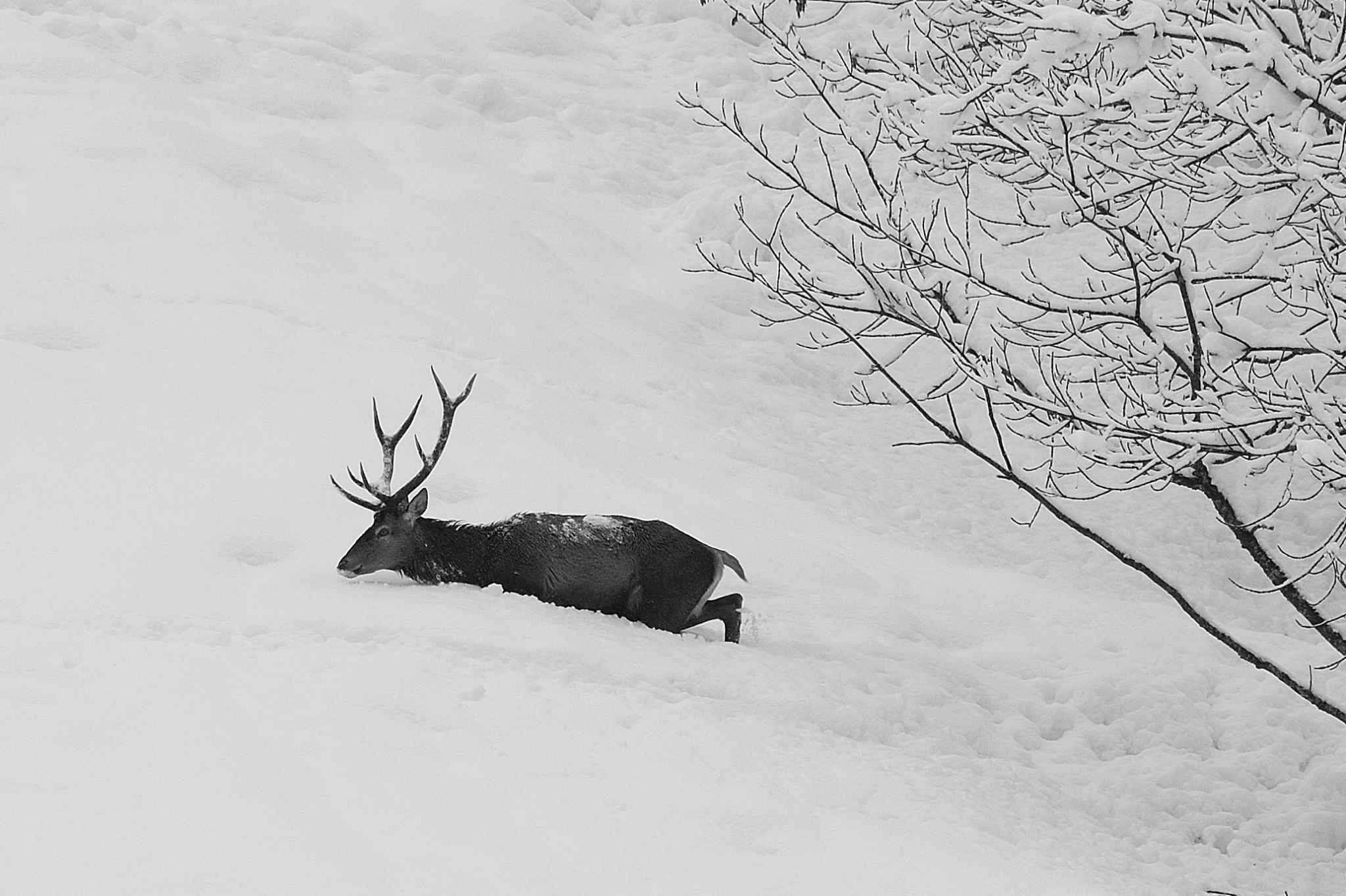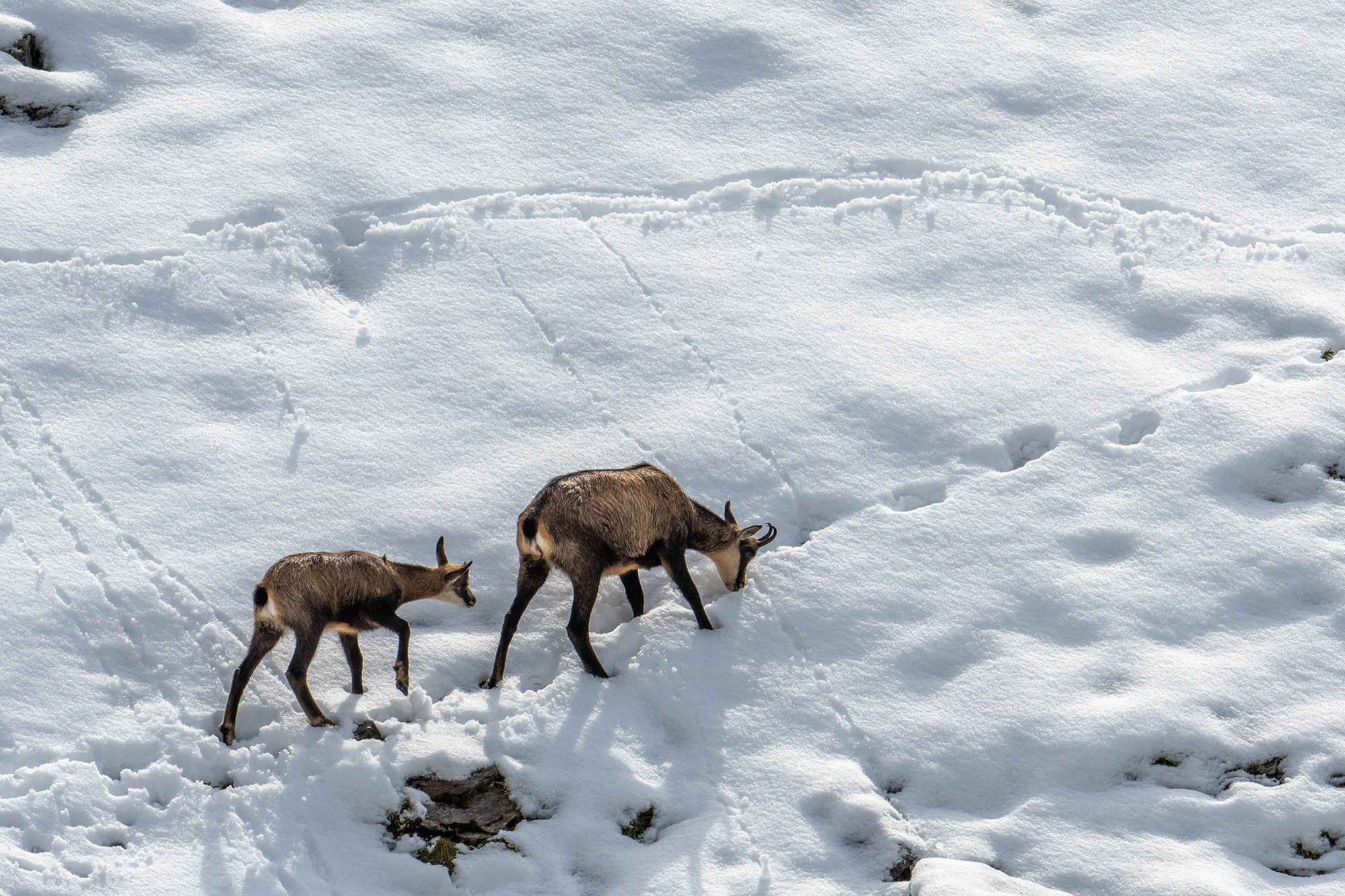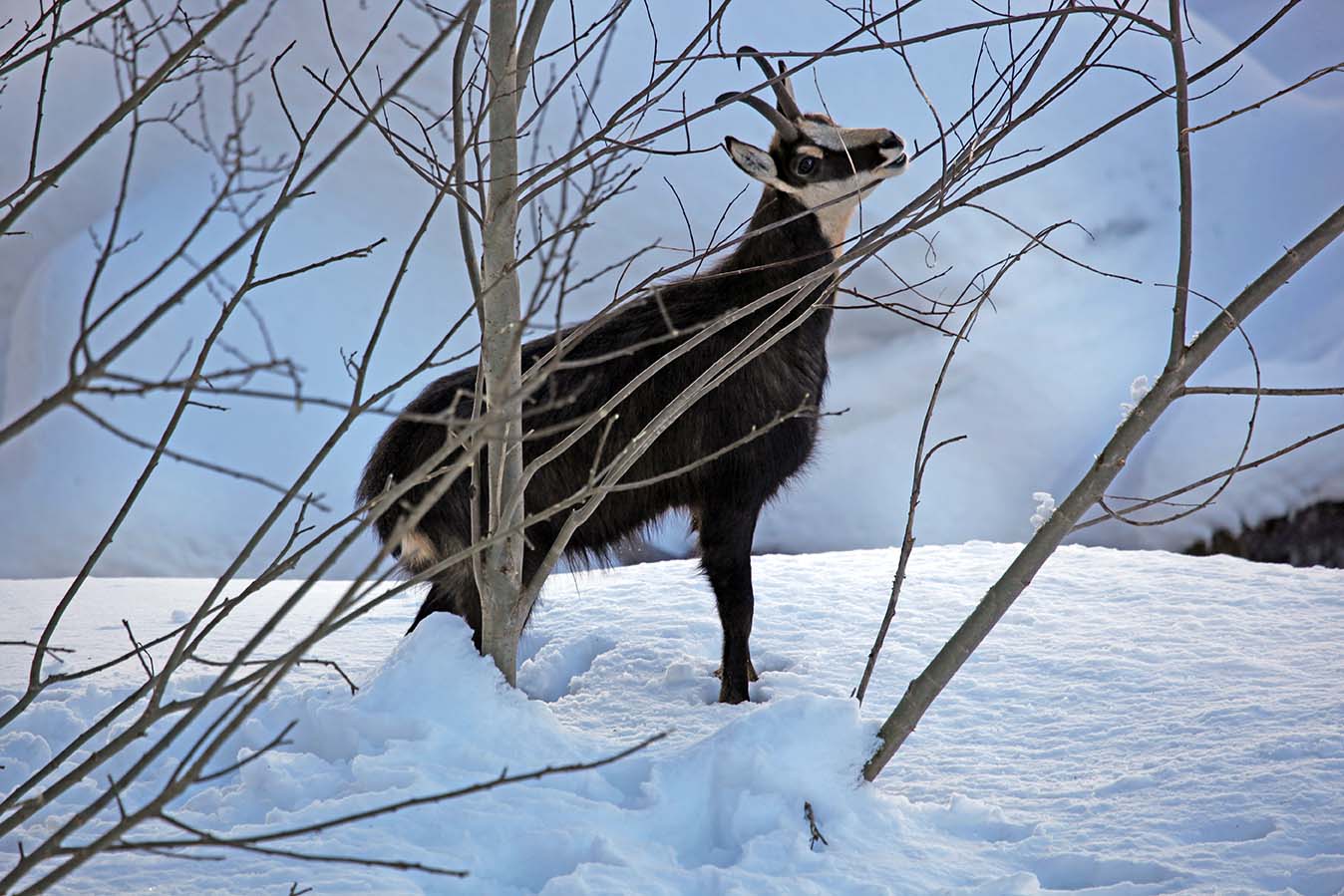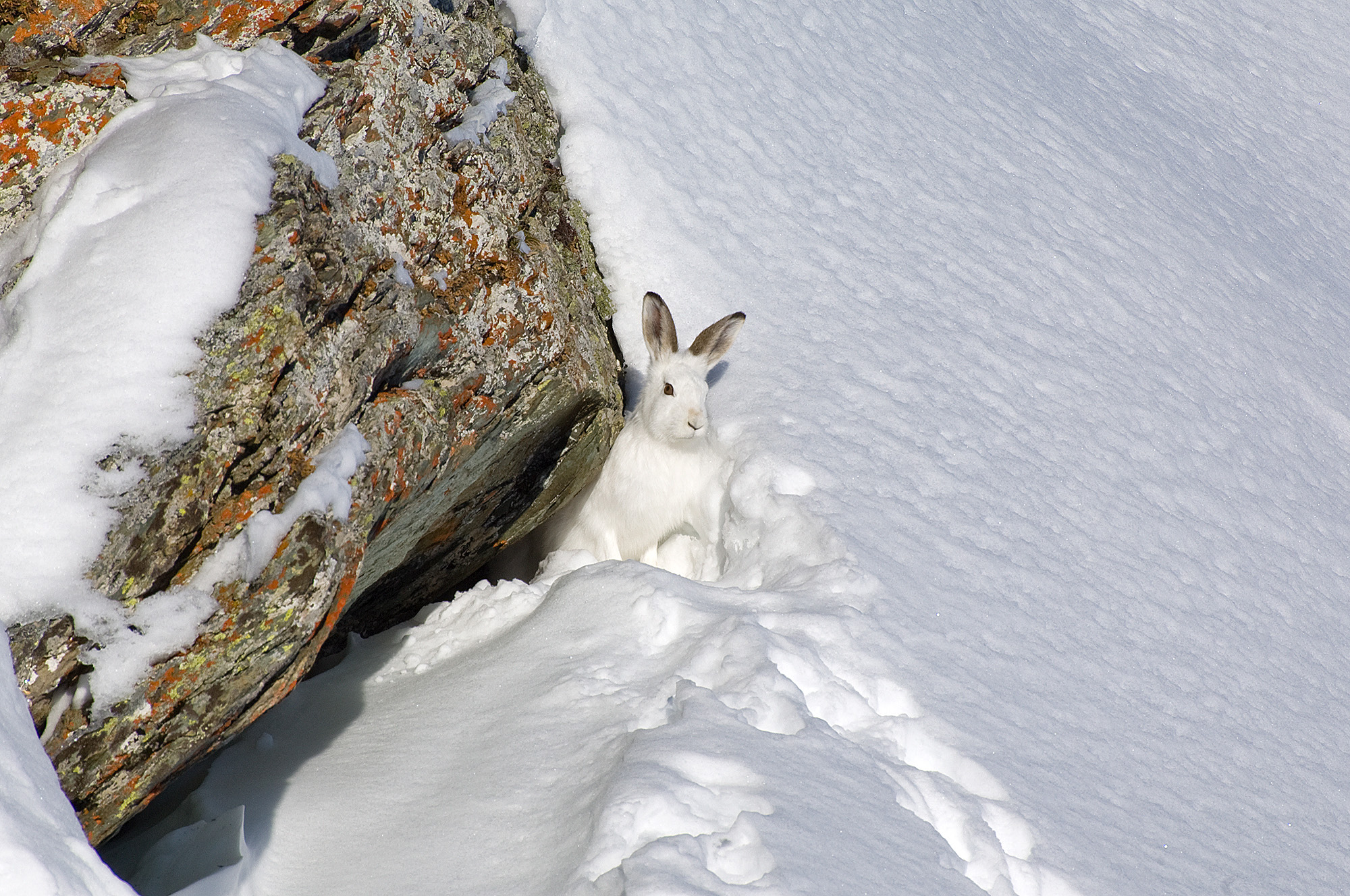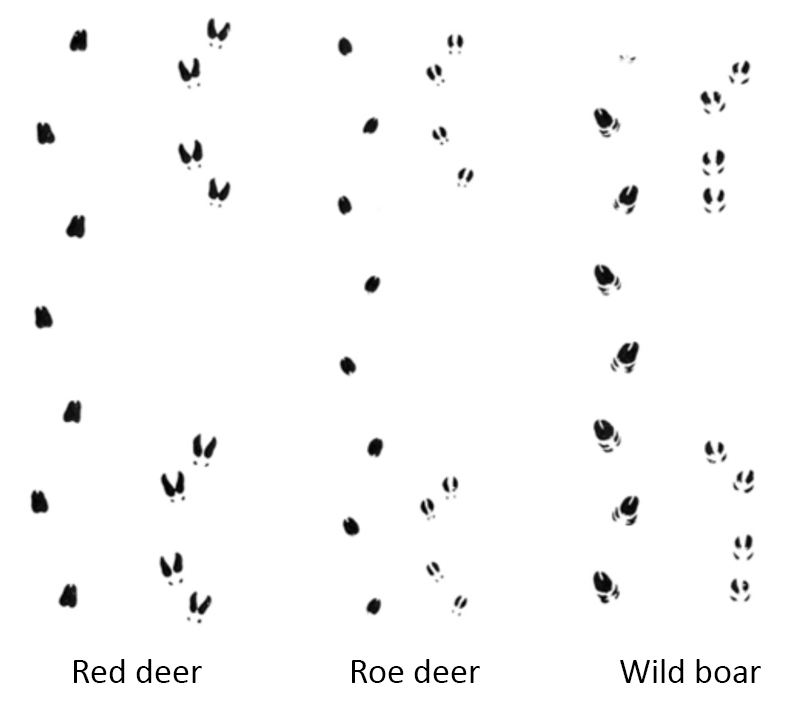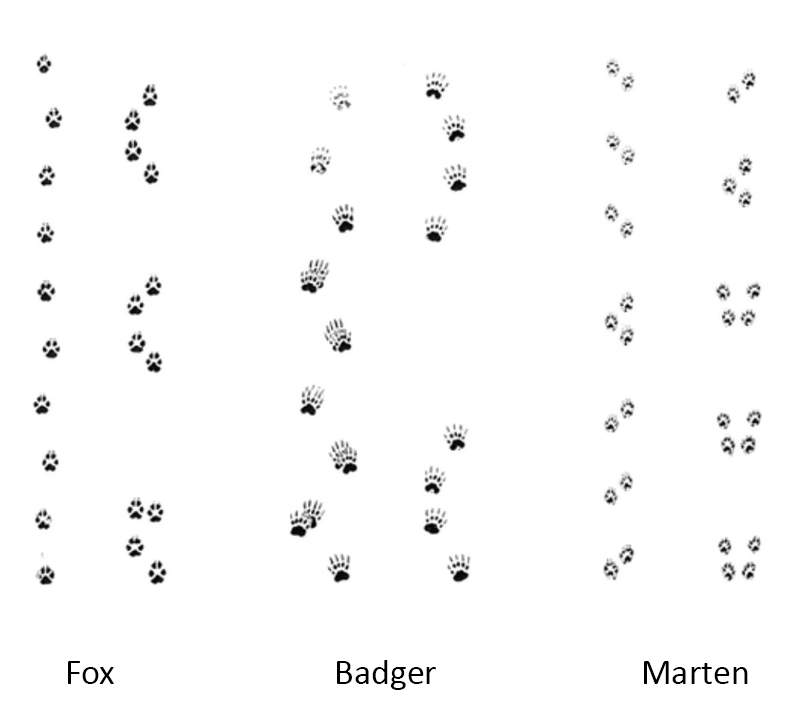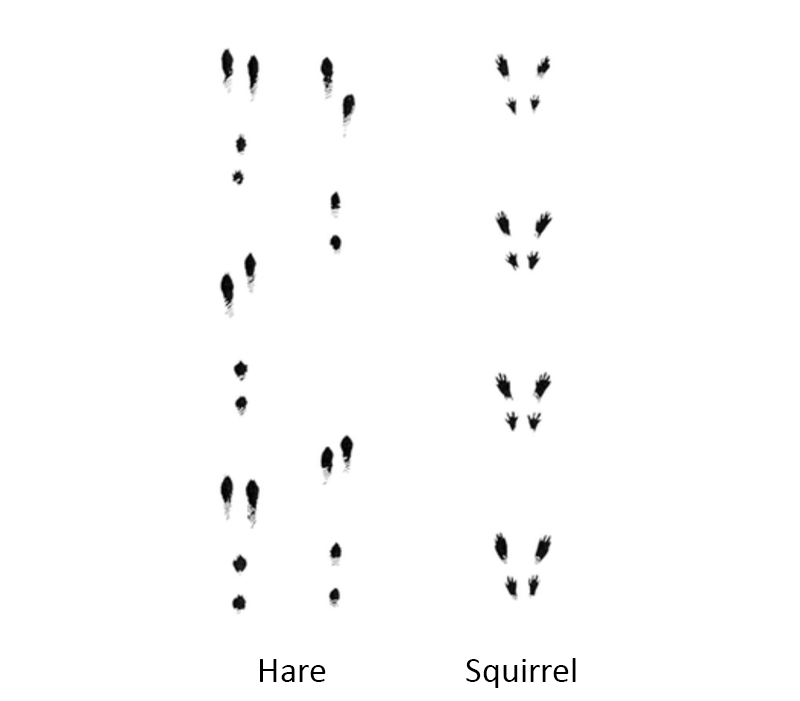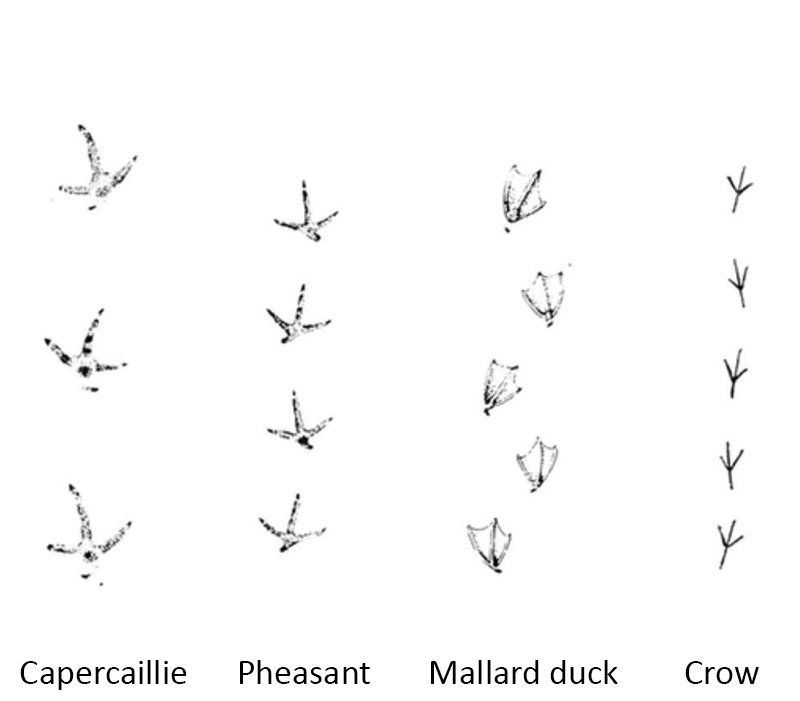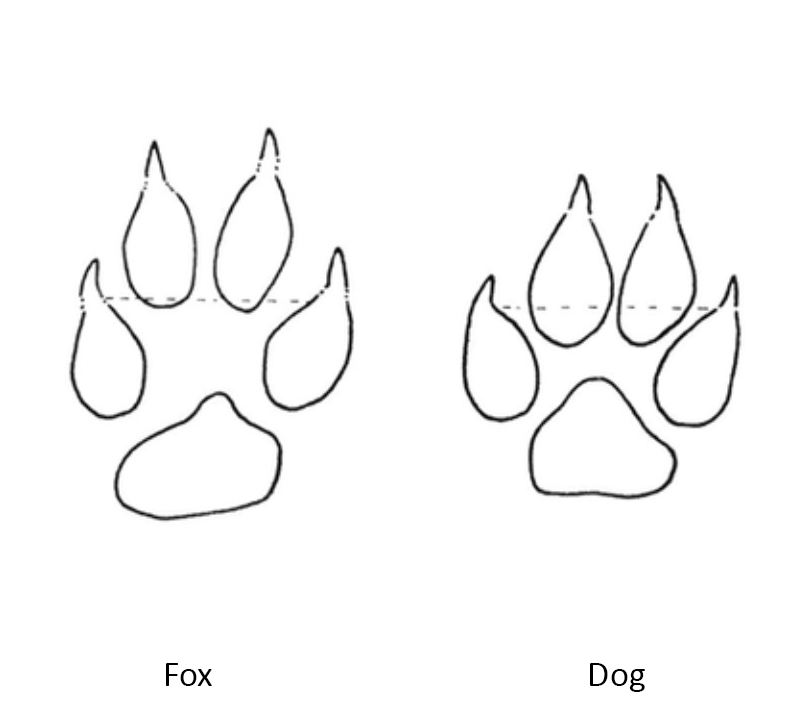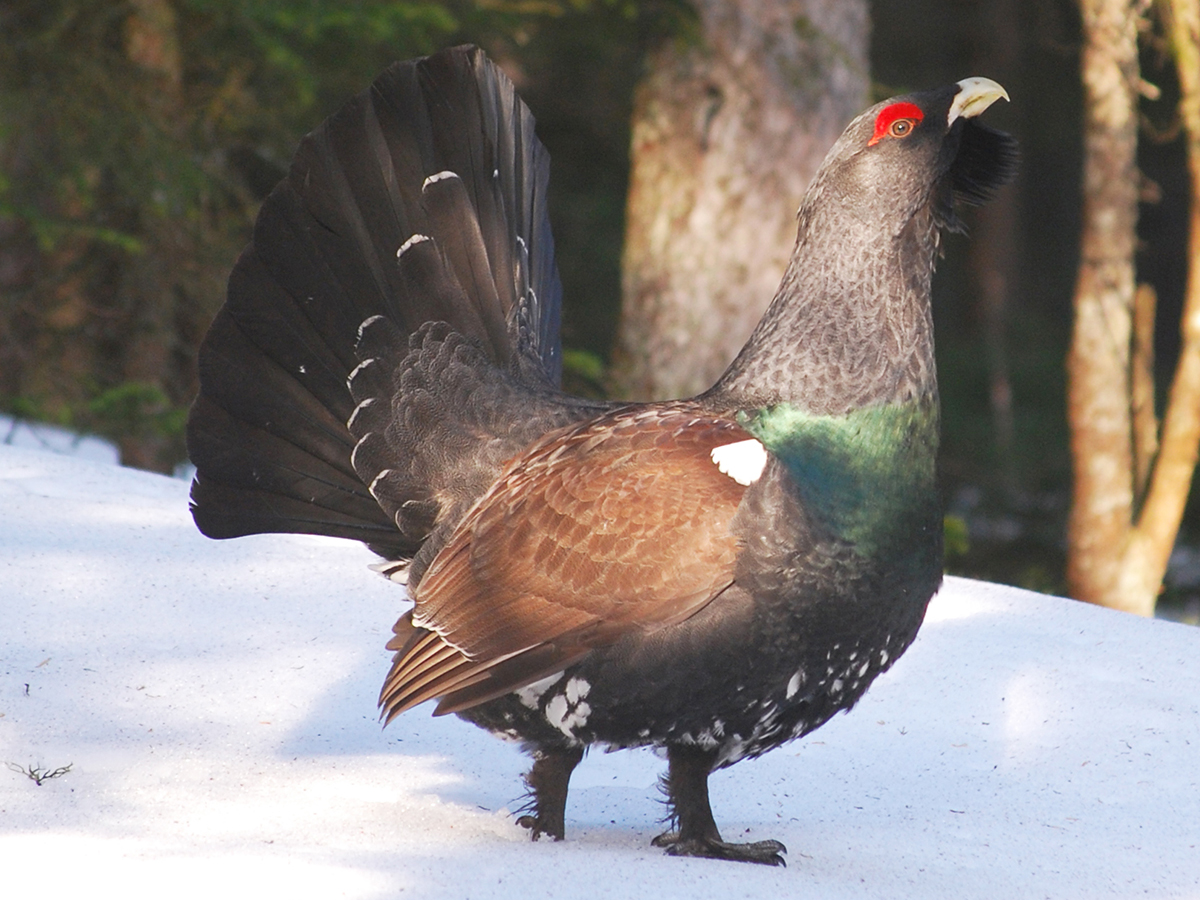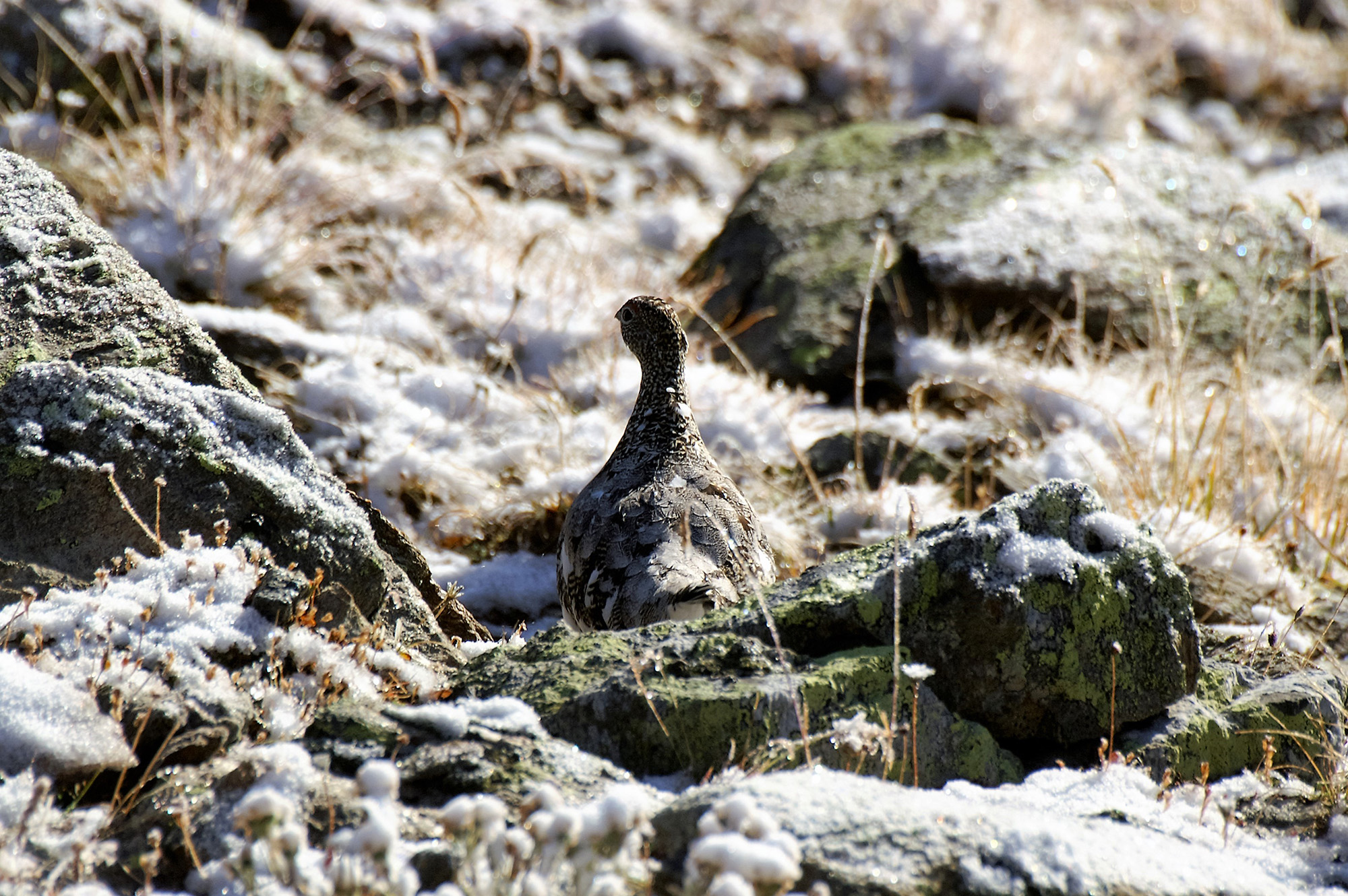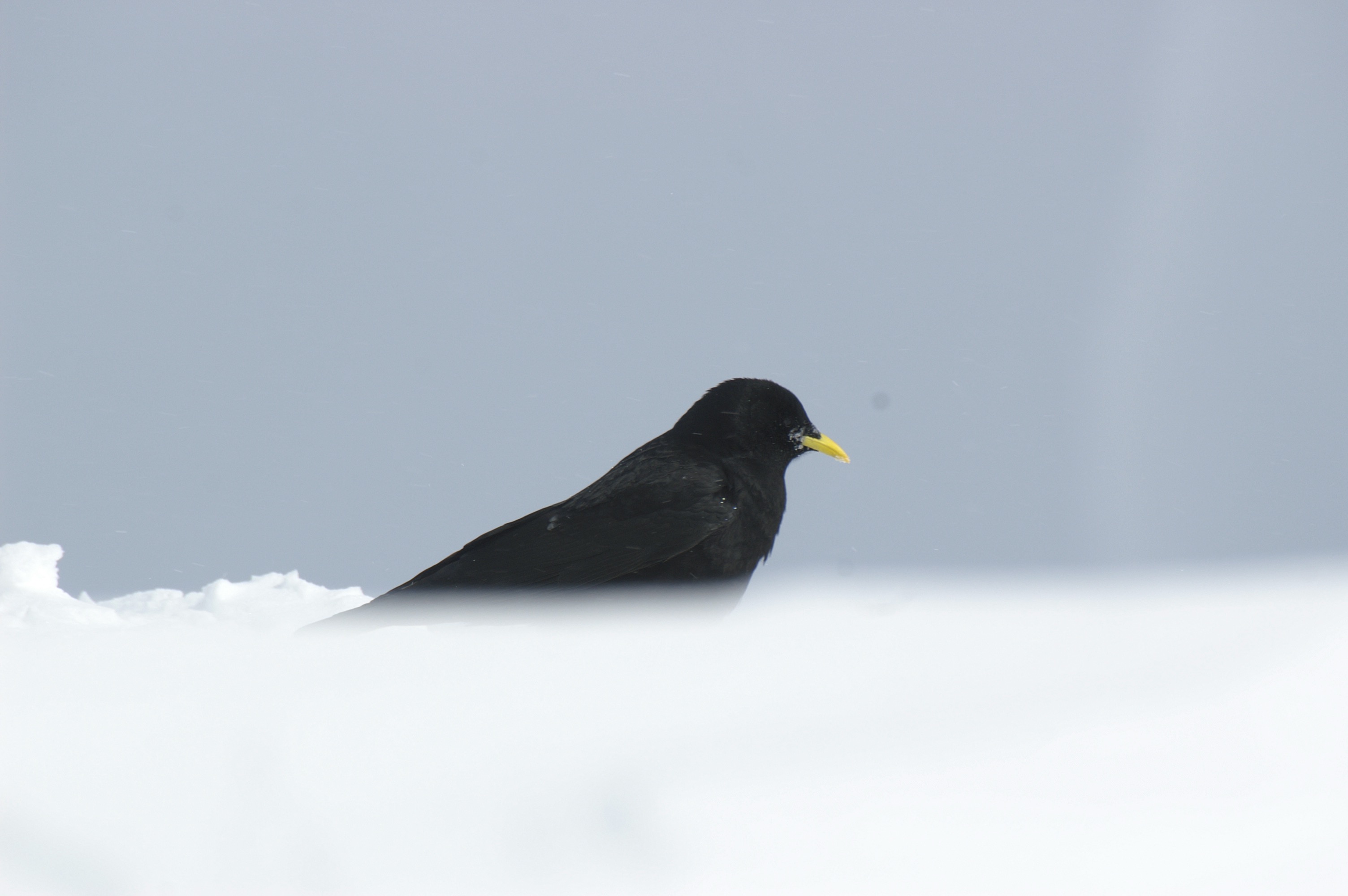Just as we leave tracks in snow, silt, sand or damp earth with the soles of our shoes or tyres of our bicycles and cars, wild animals leave tracks with their hooves, paws, claws and feet. These animal tracks are most obvious in fresh snow. It’s not easy to read them, but a whole new world opens up for anyone who learns to do so.
Each animal species has its own characteristic single footprint or tread mark, depending in mammals on whether the animal’s motion is plantigrade, meaning it walks with the toes and metatarsals flat on the ground (badger); digitigrade, meaning it walks on its toes with the heel and wrist raised (fox); or unguligrade, i.e. it walks on the claw or nail (hooves of hoofed wildlife). In the case of feathered game, a ratite (flightless) bird has a completely different tread pattern (e.g. toes of the pheasant) to that of a swimming bird (webbed feet of the mallard duck).
Prints, tracks, spoors
A series of successive impressions left by an animal’s feet forms a track or spoor, although a spoor may also include tracks, scents, scat, or signs of broken foliage, for example. Here, however, we are going to concentrate on describing the tracks left by the animals’ footprints in the substrate.
The tread marks of hoofed wildlife, i.e. red deer, roe deer, ibex and chamois, and those of wild boar, are generally called hoofprints. The footprints of hares and squirrels, and predators such as martens, foxes and badgers can also be called pawprints. With birds we usually talk about footprints.
Non-aquatic game birds are generally ground birds. Their tracks are alternating. This tells us that they tend to walk rather than hop. So it is possible to read all sorts of things from an animal’s tracks! A footprint not only reveals the species of animal, but may also tell us something about the sex and age of the specific individual. As well as the direction of the animal’s movement, it provides information about the animal’s gait, and whether it was moving at a leisurely pace, trotting hurriedly, or in fact fleeing.
Walking, trotting, fleeing
Depending on the type of movement, game “straddles” to a greater or lesser degree, meaning that the hoofprints made by the left and right legs form two tracks that appear - in accordance with the width of the body - in a staggered pattern either side of an imaginary centre line. This space between left and right tracks is called the straddle, while the longitudinal distance between the heel of one print to the heel of the next print on the same side shows the length of the stride.
When the animal is walking at a leisurely pace, or moving slightly faster (trotting - longer stride, narrower trail width), the hind hoofprints of ungulates land more or less exactly on the front hoofprints on the same side of the animal, so that these prints effectively consist of one print on top of the other, the hind hoofprint superimposed on the front hoofprint.
When the animal is fleeing, on the other hand, as in a gallop, it makes a series of bounding movements from the propelling hind legs on to the forelegs, with the hind legs flying past around the front legs, so that the hooves of the hind legs land in front of the hoofmarks left by the forelegs. The more rapid the gallop, the further the hind leg hoofprints are in front of the foreleg prints.
Direct register trotting, hopping (bounding), and nails/claws
Individual animal species also have very characteristic track patterns. One example of such a pattern is the direct register trot (gentle trotting) of predatory animals, which is especially pronounced in the fox. Its rear paws not only register directly on top of the prints of its forefeet, but also in a single line, without straddling, so that the track pattern resembles a string of pearls.
It's very different with hares: Because they only have two types of gait, either hopping or fleeing (galloping gait), and these are also very similar, they leave a completely different track, namely the so-called “bunny hop”. In hopping, the hind prints do not coincide with the prints of the front limbs. Instead, the much longer back paws land more or less in pairs ahead of the smaller forepaws. With the squirrel it is similar.
Martens also have a hopping or bounding forward movement, but their hind paw prints land squarely on the prints of their forepaws, so that we only see one pair of footprints in the track sequence. This is called pair hopping. Another peculiarity is the marks left by nails or claws. This is a typical feature in the badger, which has strong digging claws in front of the toe pads on its forepaws. These are clearly visible in its tracks.
Track patterns ‒ a comparison
Instructions for the super sleuth ‒ how to preserve the evidence
If you would like to play Sherlock Holmes as a wildlife biologist, you can preserve the distinctive footprint of a wild animal in silt, damp earth or frozen snow by making a plaster cast for comparison purposes:
- Carefully remove leaves or pine needles from the footprint.
- Make a ring of cardboard and staple it together before placing it over the print and pressing it into the substrate.
- Mix modelling plaster (plaster of Paris) to a thin consistency in a container.
- Pour the plaster carefully along a stick (so that no damage is caused to the print or air bubbles are trapped) into the ring of cardboard around the footprint, until the footprint is covered by approx. 2 cm of plaster.
- After about 20 minutes, carefully dig out the circle of plaster with its cardboard surround, and leave the plaster to harden for a few hours.
- Remove the cardboard and clean the impression with an old toothbrush before labelling it (animal species, place of discovery, date).
If you want to make a positive from this negative impression, coat the negative evenly with Vaseline, surround it again with a strip of cardboard and pour plaster into this new mould. This results in an impression as found in the countryside.
Fascination and food for thought
Animal tracks in the snow are fascinating ‒ the silent sign language of living nature, you could say. Tracks provide indirect evidence of wildlife foraging for food, or seeking to engage in social contact. However, if escape tracks dominate, as is unfortunately increasingly the case, then there is cause for concern.
This is because despite some highly ingenious survival strategies, wild animals often walk a precarious line between life and death in winter. Any additional disturbance - caused by winter sports enthusiasts skiing off-piste or off prepared trails, for example - may cause the animals to expend costly energy unnecessarily. As they are already living at subsistence level in terms of energy, this can put their lives at risk.
So let’s all make sure we show consideration for wild animals when doing winter sports. We must allow animals to rest in their hiding places - especially during mountain winters - and we must avoid disturbing their social structures. Instead, we can content ourselves with following their tracks as they move at a leisurely pace - without frightening them, causing them to take flight, or subjecting them to potentially deadly stress.
Translation: Tessa Feller

